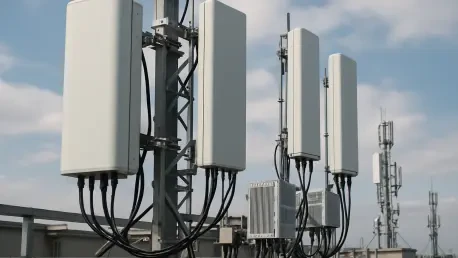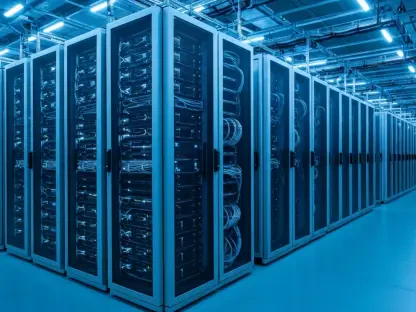Listen to the Article
Organizations facing latency and other connectivity issues stand to benefit from faster and more secure systems. A safe connection increases productivity among workers, which facilitates seamless operations for greater profitability. Advancements in connection also enhance flexibility and make business functions more scalable, allowing owners to better adapt to changing market demands. Continue reading to discover the top technologies shaping the networking industry in 2025 and the emerging trends within it.
Changing the Future of Connectivity With Top Networking Technologies
5.5G: The Improved 5G
With its ability to offer high-speed data transmission and reduce latency, 5G technology has long been one of the most influential developments in networking. Today, industries can expect to double the benefits by using the evolved 5.5G technology, also known as 5G-advanced, which offers support to a wider range of applications, taking connectivity to the next level.
Using 5.5G allows businesses to welcome the next-generation of connectivity, which combines greater speed with reliable communications and better energy efficiency. This technology changes the future of connectivity by:
Increasing speed for high-performance and data-sensitive applications, which allows for seamless experiences with no buffering. For example, virtual reality and augmented reality apps that use 5.5G function at high speed.
Improving reliability in networking by facilitating low-latency communications. Industry 5.5G is adaptable to multiple industries, including telemedicine where services affect patient outcomes, and the automotive market where vehicle safety is paramount to prevent road accidents.
Enhancing energy efficiency within sustainable businesses. Setting up 5.5G networks allows green industries to adopt smart solutions and maximize performance with less energy consumption. This can help companies align with global ecological goals and uphold their environmental responsibility.
Introducing Wi-Fi 7
Speed, capacity, and efficiency are all offers that come with adopting Wi-Fi 7. This newly implemented technology is particularly helpful in high-density areas such as smart cities and offices. It enables reliable wireless signal and fast connection by reducing interference. Users receive a more stable connection for conferencing calls, digital applications, and IoT.
Network-as-a-Service
As a cloud-based model that enables organizations to subscribe to networking services from third-party providers, network-as-a-service accelerates connection for businesses of all sizes. With this technology, businesses no longer have to buy costly infrastructure; instead, they pay a fee that covers connectivity resources and support, reducing financial expenditures.
Using a subscription-based model enables companies to manage high demand, handle traffic, and onboard virtual teams with ease. They can scale up or down depending on their needs, which helps maintain the right amount of bandwidth at all times.
Companies can also use this networking infrastructure to enhance security by leveraging features such as firewalls, encryption, and threat detection systems. Managers can rely on these security systems without having to manage them.
The multiple factors driving adoption of this subscription-based model include:
Access to faster and more secure networks for remote and hybrid business environments. Since COVID-19, many companies have adapted to hybrid or completely remote work, necessitating dynamic and decentralized collaboration. Network-as-a-service equips these workforces with the ability to connect from any location, which ensures productivity and operational continuity.
Democratized access for small and large enterprises alike. While more established companies have the resources and funds to scale outside a networking ecosystem, startups do not typically have the same affordability. As such, using network-as-a-service allows newer enterprises to leverage technology for market expansion and reach.
Automated solutions that enable organizations to optimize performance, manage their networks, and minimize the burden on IT teams. The AI-powered features available with network-as-a-service enable teams to perform at peak efficiency with reduced interruptions and less downtime.
AI and Machine Learning
Businesses can ensure smarter and faster connectivity by integrating AI and machine learning into networking systems. Leveraging these technologies makes networks operate more efficiently and reliably. Enterprises that prioritize these solutions can use IoT devices, cloud services, and intelligent tools for optimal performance. This way, managers have the capacity to focus more on scaling the business rather than continuously purchasing infrastructure.
The benefits of AI and machine learning extend beyond convenience and efficacy toward resilience. Businesses that adopt these tools invest in autonomous solutions that adapt, change, and improve with different conditions. These technologies can learn from cyberattacks and become more equipped to handle them, making enterprises stronger and better at planning for threats.
Intelligence in network management plays a crucial role in optimization across organizations. Using these technologies helps enterprises function at their best by:
Minimizing human error through automated activities such as router configuration and traffic management. AI enables systems to automate repetitive tasks and balance network loads, which helps companies focus more on strategic goals and less on controlling for mistakes.
Providing predictive analytics for business networks. Intelligent tools have the ability to use historical data and patterns to predict problems, such as equipment failures and system bottlenecks, so companies can prevent issues or intervene effectively.
Improving fault detection by identifying deviations and anomalies in real-time. Machine learning enables systems to notice unusual patterns that are associated with cyberthreats or potential outages, allowing companies to reroute traffic and instantly troubleshoot issues to reduce potential downtime.
Watch Out for Emerging Trends to Stay Ahead of the Competition
The Rise of Network-Cloud Convergence
Modern IT architecture combines cloud computing with network management to establish quality connectivity across hybrid and multi-cloud facilities. This convergence is steadily becoming nonnegotiable in the digital age. Combining networking and computing offers companies an innovative, flexible, and resilient approach to scaling and operating within their respective markets.
Cloud convergence enables operational simplicity by allowing unified cloud services and networks to make management approaches more effective for IT departments. This emerging technology also uses Software-Defined Wide Area Network features alongside cloud-native components to protect the flow of sensitive information and can detect threats quickly. The ability to notice invasions early and adapt workloads enables business efficiency and contributes to resilient systems.
Quantum Solutions: Redefining Network Security and Speed
Integrating quantum bits in network management promises high security, data integrity, and speed in transmission processes. This solution is expected to redefine communication across industries, allowing companies to improve operations by maximizing privacy and precision in technology.
While quantum networking is in early stages, it can transform connectivity and redefine communication across organizations. The key factors that revolutionize quantum mechanics include:
Quantum key distribution: It enables unhackable encryption by using relevant components to transmit cryptographic keys. Should invaders try to intercept this exchange, quantum key distribution instantly detects the intrusion and destroys the data, leaving nothing to steal.
Absolute data integrity: It’s a byproduct of using quantum bits, which is especially helpful for sectors that keep sensitive information, such as in finance and healthcare. By using unhackable encryption, companies can safeguard data and records to uphold trust and reliable operations.
Final Insights
Businesses that are looking to future-proof their performance and operations must focus on leveraging advancements such as AI, network-as-a-service, and 5.5G. Sustainable networking involves staying ahead of the competition by incorporating approaches that help enterprises have faster and more reliable connections. The question is not whether companies should adopt these technologies, but how efficiently to integrate them into their strategy as a means to retain competitive advantage.









